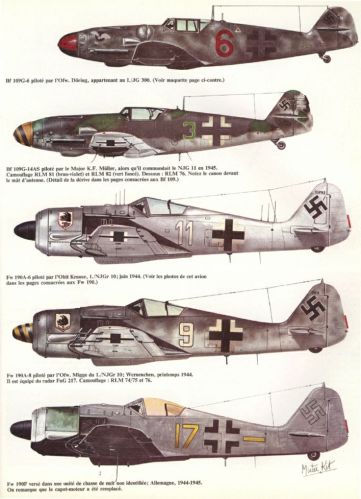The radar-based German fighter defense system was always oversaturated and nearly invalidated by the bomber streams and by the new electronic countermeasures systems, including Window (chaff). On 27 June 1943, Major Hajo Hermann proposed to the commander in chief of the Luftwaffe, Hermann Goering, that night-fighter defense tactics be modified to a radical new scheme. This was the so-called Wild Boar plan that allowed the concentration of masses of single-engine day-fighters against the bomber streams independent of radar guidance. By using searchlights and flares for illumination and direction-finding, and by exploiting the fact that the bombers could easily be recognized against the clouds over burning cities, the fighters could make contact without radar.
The new tactics required boldness because the German antiaircraft artillery were already firing at the bombers, but it proved very successful as a last resort after German radar was blindfolded by Window as of 25 July 1943. On the basis of this success, Hermann was ordered to establish the “Wild Boar” Fighter Geschwader 300. He later became commander of this unit and of the 1st Fighter Division.
Wilde Sau (Wild Boar) was a tactic involving fighters roving at will without radar, intercepting by visual contact in cooperation with German ground anti-aircraft artillery. Initial successes with Wilde Sau were soon reversed by heavy and mounting losses and the technique was dropped in March 1944.
If the cloud ceiling at the time of the attack too high, restricting the lighting effect, the optical conditions were insufficient to apply Wilde Sau. The success of the attacks was also lost with the onset of bad winter weather in late autumn 1943, when wastage through accidents and icing soared. German pilots were always at risk from their own anti-aircraft fire. Even if “Wilde Sau” were also partly accomplished by twin-engine night fighters, the bulk of the action was carried out by conventional day fighters borrowed from the day Jagdgeschwaders. This double load of daily and night operations and the resulting erratic maintenance schedules meant fighter servicability rates dropped drastically.
